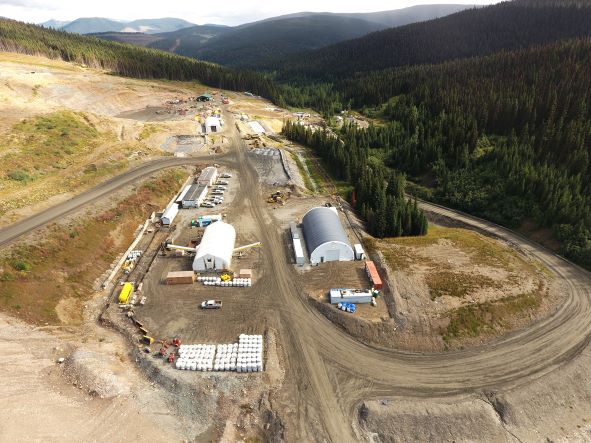 Canada’s Osisko Development Corp. recently announced the results of an independent Feasibility Study (FS) prepared by BBA Engineering Ltd. in accordance with National Instrument 43-101 for the company’s Cariboo gold project, located in central British Columbia.
Canada’s Osisko Development Corp. recently announced the results of an independent Feasibility Study (FS) prepared by BBA Engineering Ltd. in accordance with National Instrument 43-101 for the company’s Cariboo gold project, located in central British Columbia.
Cariboo is expected to produce approximately 1.87 million ounces (oz) of gold over a 12-year mine life. The FS outlines a phased development base case, which would require a capital investment of $C 137.3 million ($101.1 million) for Phase 1, which includes underground development. The Phase 2 expansion will require a capital investment of $C 451.1 million ($332.2 million).
Initial production (Phase 1) in the first three years contemplates a 1,500 metric ton per day (mt/d) operation from the Lowhee, Shaft and Mosquito deposits, yielding average annual production of 72,501 oz of gold. Concurrently, underground development will advance to ramp up operations to 4,900 mt/d in year four, increasing average annual production to 193,798 oz in Phase 2, with potential to scale production further in the future.
“This feasibility study demonstrates that the Cariboo gold project will be a large-scale, long-life and profitable gold mine,” said Sean Roosen, chairman and CEO of Osisko Development. “It will also produce significant quantities of gold in its initial years at a capital cost below $C 140 million. By phasing construction, we have minimized our exposure to development risk at Cariboo, optimized the sequencing of the assets in our portfolio and maximized our ability to scale Cariboo to reach its full potential in the future. We envision Cariboo as a project that will be a cash flow engine for the company for decades into the future.”
The FS indicates a $C 502 million ($369.7 million) after-tax net present value at a 5% discount rate at a base case gold price of $1,700/oz and CAD:USD exchange rate of 0.77.
Underground mining will be conducted using highly-mechanized, low-cost bulk tonnage methods designed to target the extraction of ore contained in gold vein corridors: a high-density network of mineralized quartz veins hosted mainly within unmineralized sandstone. A pre-concentration ore sorting facility is expected to significantly improve processed grades by separating non-mineralized material from ore, while substantially reducing processing volumes, energy costs, and the overall environmental impact footprint of the operation with fewer tailings, reduced water usage and ability to use waste as backfill.
The probable mineral reserve contains 16.7 million mt at an average grade of 3.78 g/mt gold for a total of 2.03 million oz of gold. The average diluted head grade for Phase 1 is expected to be 4.43 g/mt (and 8.20 g/mt post-ore sorting). During Phase II, the average diluted head grade is forecasted at 3.72 g/mt (and 6.39 g/mt post-ore sorting). The life of mine average cash costs would be $792/oz and the average LOM all-in sustaining costs are estimated at $968/oz.
“Historic mining in the district was focused on individual veins and replacement bodies with grades in excess of 12 g/mt, which is consistent with our work completed to date,” Roosen said. “Once underground, we are excited to apply our strong understanding of the controls on mineralization to unlock Cariboo’s vast exploration potential at depth within the current mining zones, which we believe have strong potential to continue across Cariboo’s 83-kilometer mineralized trends.”
The company said it remains on track for completing the Environmental Assessment process early in Q2 2023 and anticipates receiving final permits by the end of 2023.






